|
McCloud River Lumber Company:
Logging the McCloud Woods |
|
|
|
The McCloud River operations existed to convert trees to lumber. The process began in the vast forested lands predominately east of McCloud, in the mixed tree stands dominated by Ponderosa and Sugar pines. The basic steps of logging didn't change much through time. Long before any actual logging begain surveyors, timber cruisers, and engineers would work through the stands, accomplishing tasks such as locating land ownership boundaries, estimating the standing volume of the tree species present in the woods, and planning how logging would actually be accomplished. The next step would be constructing the logging railroad spurs in the early years, transitioning to truck roads in the later years, through the stands to be harvested. The loggers would come next, with the fallers cutting the trees down, followed by the buckers that would remove the limbs and then cut the trunks into logs, and then the loggers who would drag the logs to the landings, the centralized points along either the logging railroad or the truck road where they would be loaded onto trains and then trucks for the trip to the mill. The technologies involved in all of these steps evolved through time. |
|
|
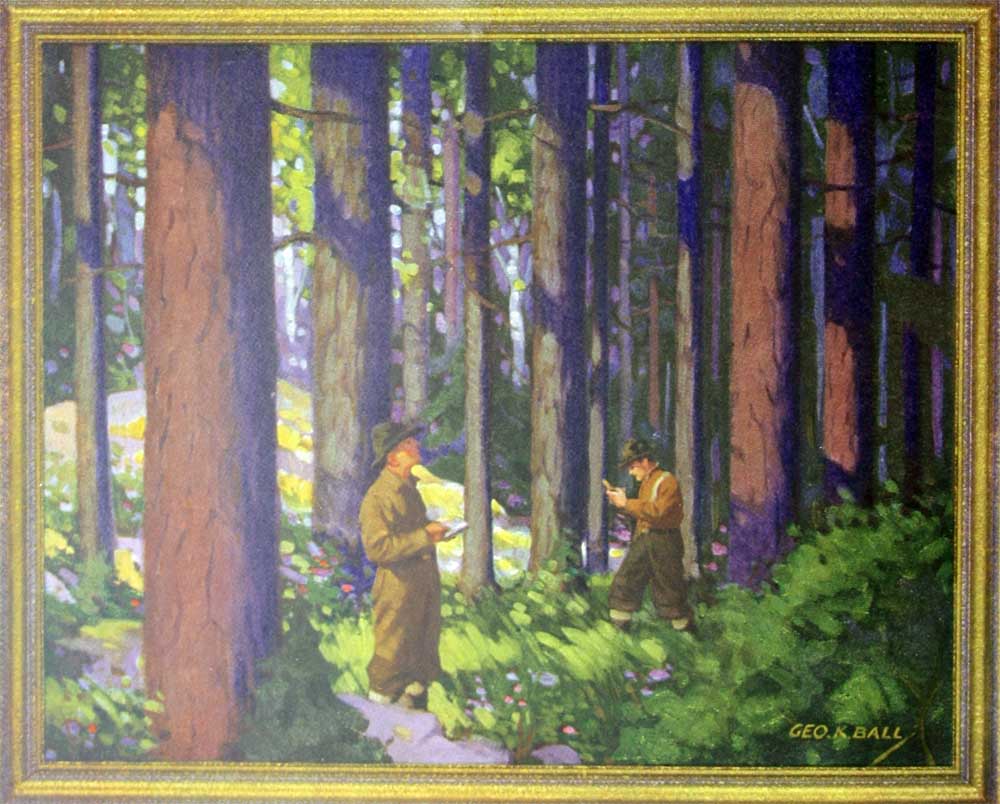 |
|
A painting of early timber cruisers at work, from the Specify Shevlin Pine booklet reproduced in the Advertising section.
|
|
|
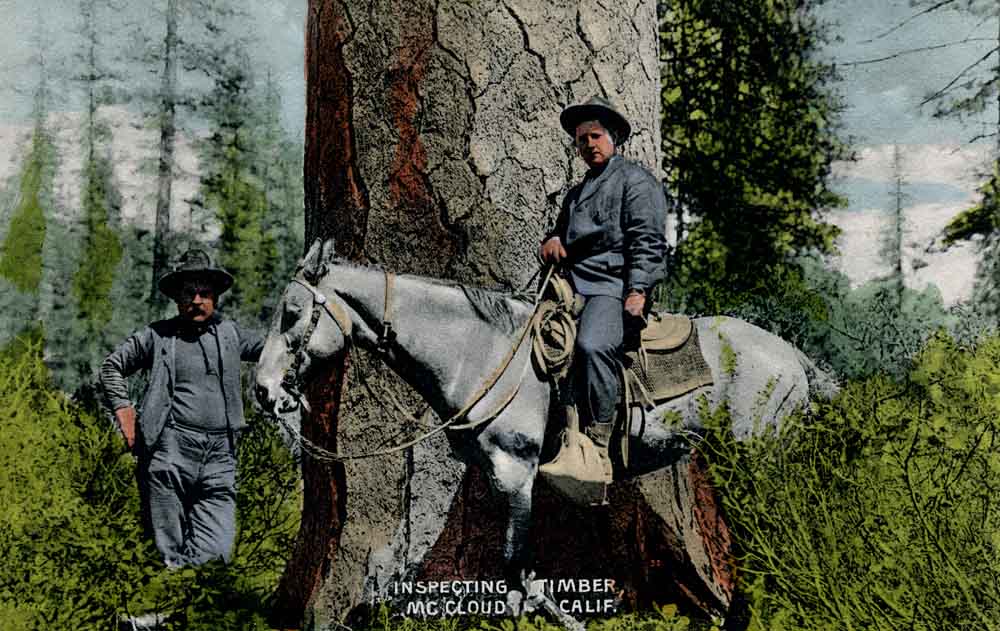 |
|
Roger Titus collection.
|
|
|
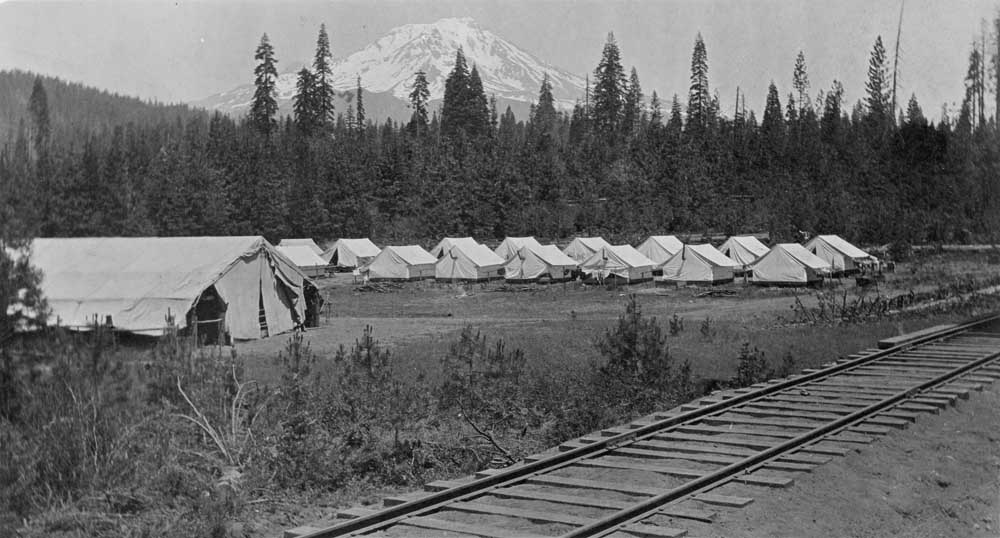 |
|
Tents at Camp 4, one of the many temporary log camps the lumber company used in the first decades of operation. Jeff Moore collection.
|
|
|
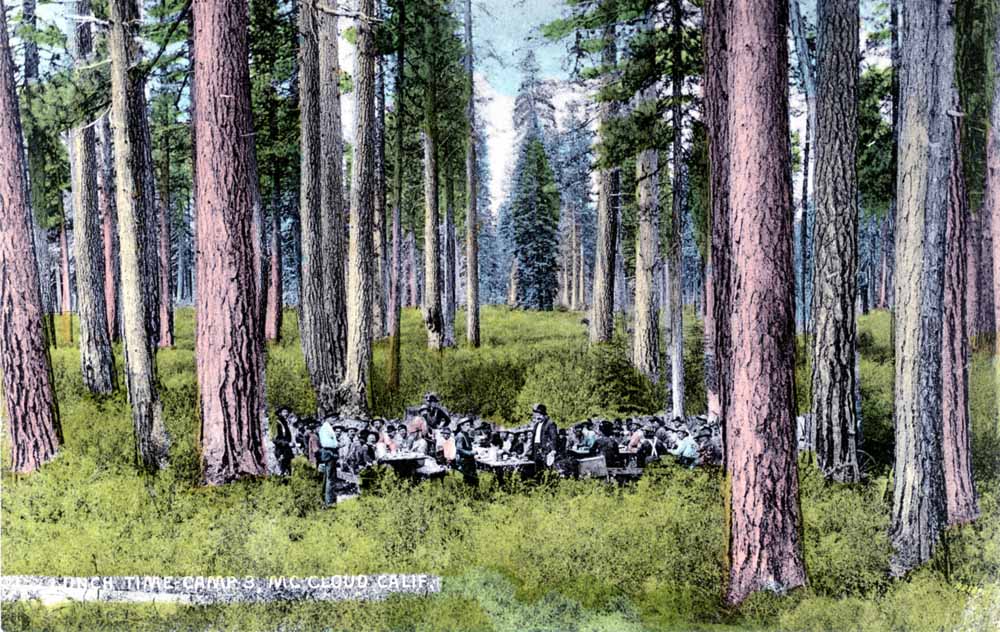 |
|
Lunch time at Camp 8. Jeff Moore collection.
|
|
|
|
One of the biggest challenges in the logging industry lay in moving the logs from the stump to the mill in a process known as skidding in the early years and then later as yarding. Animals and water were the earliest methods used, though animals could only effectively drag logs so far on the ground and water only worked if the woods and mill lay on contiguous waterways. Loggers always have been a very inventive crowd, and it did not take long for the industry to develop methods for extending the reach of their animals, including sets of big wheels that would lift the leading edge of the logs off the ground. Logging railroads allowed loggers to efficiently move logs long distances overland to the sawmill, and the animals transitioned to skidding the logs to the nearest railroad. The next advancement introduced steam power to the woods; steam had long been used to power hoisting engines in a wide variety of applications, and lumberman John Dolbeer reportedly developed the idea of using that technology to drag logs overland while watching some of them loading and unloading ships on the Eureka, California waterfront. Dolbeer filed patents for the steam donkey engine in 1881, and it started replacing the horse and bull teams previously used in the woods. Loggers also used steam traction engines in the woods as well. The McCloud River Lumber Company commenced operations in the middle of the transition from animal to steam power and made extensive use of both in its first decades. Steam power eventually replaced animal power by the late 1910s or early 1920s, but its dominence only lasted a few short years before internal combustion replaced steam as McCloud transitioned almost completely to tractor logging almost overnight in the middle 1920s. The next technological evolution employed trucks to move logs; the first such vehicles started appearing in the woods in the early 1900s, though the McCloud company did not purchase its first log trucks until around 1950. Like many large operations, McCloud initially used trucks to haul logs from the landings to reloads established on the railroads, replacing the spur line logging used up to that point. Trucks eventually replaced the logging railroad entirely. |
|
|
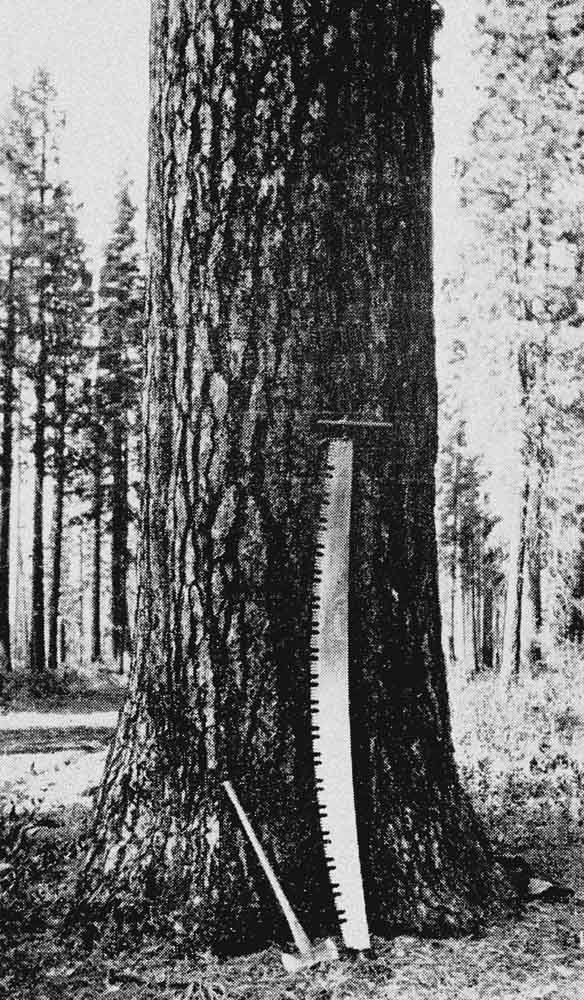 |
|
The basic tools of a logger resting against a Sugar pine tree. Jeff Moore collection.
|
|
|
|
Since the focus of this operation is the railroads of the McCloud River operations, this section will deal with logging from 1896 until 1963 and specifically the means by which the lumber company moved
logs from the stump to the landings along the logging railroads. Links to pages with specifics about each process are below. Falling and Bucking Horses and High Wheels Steam Donkeys Traction Engines Gas and Diesel Tractors Truck Logging |
|
Additional information and photos can be found in the Logging Equipment pages of the Equipment Roster section of this website. |
|
|